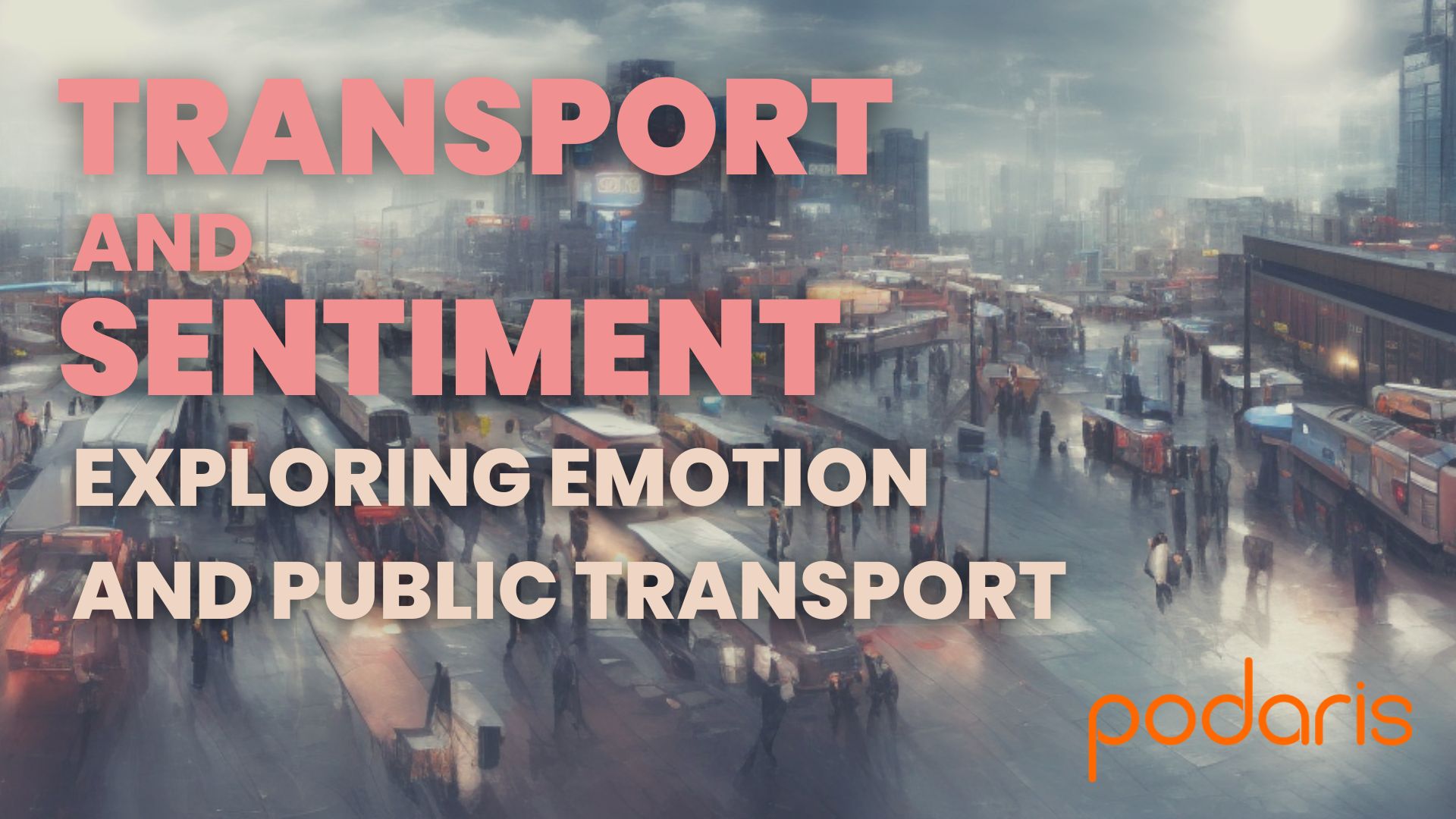
Think about the last time you took a bus, a train, a tram… What sort of emotions did it inspire in you? For some of us, travel can be an opportunity to unlatch from our daily routines and enter something like a serene fugue state while being ferried from point to point. For others, it's a chaotic and cacophonous experience, typified by frantic fumbling through pockets for dog-eared tickets and panicked dashing for departing trains.
Even the rosiest commercials for train travel seem to imply that we're privately imagining we're doing anything other than sitting on a train:
Is there such a thing as a typical emotional experience when it comes to travel on public transport? Or even being in the vicinity of a transport hub? Panote Siriraya and his team at the Kyoto Institute of Technology, Japan, sought to answer that question, using tweets posted in London and San Francisco between 2016 and 2017 (some years before Twitter removed location data from posts).
Using OpenStreetMap (OSM), an open geographic database included as one of a number of base maps available in Podaris, the team was able to spatially contextualise the tweets. Using neural network classifiers, they were able to identify emotions expressed in these tweets. The use of Twitter as a source for this sort of data goes back at least as far as 2010, as shown in computer scientist Alan Mislove's 2010 study, ‘Pulse of the Nation: US Mood Throughout the Day’ (animated in the video below).
These earlier studies only involved researchers identifying emotion as it exists along a spectrum of positive to negative, or more happy to less happy. Siriraya's research allows for more granular analysis of sentiment, identifying a variety of emotions: “anger, anticipation, disgust, fear, joy, sadness, surprise, trust”.
Sentimental journeys
As well as being able to visualise daily emotions throughout the year, they also explored how emotions mapped to various points of interest (POIs), based on OSM tag values. Points of interest that provoked joy included picnic sites, arts centres, miniature golf and strip clubs. POIs that provoke disgust include strip clubs (again), estate agents and train stations.
The study states that “high negative emotions such as anger and disgust were also shown nearby transportation locations such as bus stops, bridges and train stations, perhaps reflecting peoples’ frustration at waiting for their transportation or being stuck in traffic.”
A similar study conducted by Warwick University in 2016 entitled “Understanding happiness in cities using Twitter: jobs, children and transport”, sought to combine Twitter data with keyword based sentiment analysis applied, and ward-level census data for London. In doing so, their team explored sentiment around public transport in a different manner to the Kyoto study to determine whether those with access to it are more likely to be happier.
Their results showed that “those with good access to public transport are happy and those who are in areas with poor public transport are also happy (possibly because they rely on personal transportation means), whilst those that are in between are generally unhappy.”
This sort of freely available crowdsourced data can tell us a lot about how people interact with their cities, and perhaps a more focused, transport-specific study of this kind might allow planners to understand which transport hubs offer greater customer satisfaction and why. Unfortunately for the likes of universities and other research organisations, however Twitter has recently moved to restrict free access to its API.
If you've heard of any interesting studies in this domain, let us know at info@podaris.com. To find out how Podaris empowers a wide range of geospatial analysis head over to www.podaris.com and discover a new way to plan and analyse collaboratively.